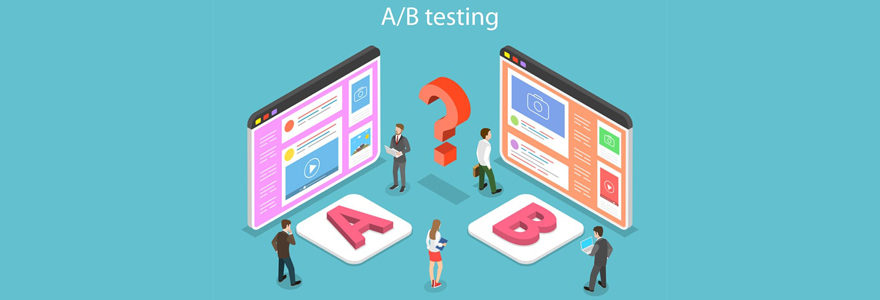Although marketers design landing pages, create call-to-action buttons or write email copies, applying intuition to forecast what the audience will click and connect is often tempting. However, making marketing decisions based on a "feeling" can be detrimental to your business results.
Please read this blog to learn what is A/B testing and what it means for your organization. You'll also discover the step-by-step for the perfect split test. Use this link to find the best tools to help you carry out A to B testing.
What is AB Testing?
Split testing, also referred to as AB testing, is a marketing experiment designed to split your recipients to test multiple variations of a campaign and assess which option performs the best. Essentially, you can show version X of a marketing content piece to one segment of your audience and version Y to the other segment.
AB testing is a valuable resource because different audiences respond differently. What works in a particular organization may not work for a different organization. This type of testing may be daunting if you're not careful.
Let's discuss how A/B testing is carried out.
Why is A/B Testing Important for Marketers?
You can conduct a wide array of split tests to make your experiment worth the effort. Here are some objectives of conducting A to B testing:
- Improved web traffic – Testing various webpage or blog post titles could impact the number of users who click on a particular title to access your website. Therefore, an AB test can enhance your website traffic.
- Increased conversion rates – Testing different colours, locations, or anchor texts can greatly impact the number of users who click these call-to-actions to access your landing page. As a result, this can increase the number of users who complete forms on your webpage, submit their contact information to your company, and turn into a lead.
- Reduced bounce rate – if your web visitors quickly "bounce" after visiting your webpage, testing a variety of blog introductions, featured images, or fonts can lead to decreased bounce rate and high visitor retention.
Step-by-Step Guide for the Perfect Split Test
Many large agencies and websites typically employ a step-based, continuous approach to A/B testing. Here is an iterative guide to building on every successful test and systematically optimizing your webpage.
Step #1 – Funnel Analysis
Before you even decide which variable test to carry out, it'd be best if you determine where your organization's website ought to be improved. Analytics tools such as Google Analytics show users' movements through your site. By assessing this information, it's easy to point out the weaknesses in the "Conversion Funnel." Once you've pointed out the weaknesses, you can decide where to apply the changes.
Step #2 – Develop and prioritize hypotheses
You can use several CRO tools to develop your hypotheses. These include heatmap tools like Hotjar and CrazyEgg and survey tools such as Typeform. The best testing hypothesis should be well-defined and based on your information. In addition, it should be related to your business's key performance indicators (KPIs) and have a significant probability of generating positive results.
Scoring hypotheses against your priority checklist can help determine the variables to test first. Therefore, you may want to create a checklist to concentrate on objective-based factors instead of superficial concerns.
Step #3 – Design your experiment
It's important to be certain of the settings involved in the experiment. Before you conduct a test, deciding on your objectives, target pages, and how you intend to dive into your audience is best. Many testing tools use the Multi-Armed Bandit to separate audiences in your pages. A Multi-Armed Bandit is an algorithm that determines traffic allocation to your website. It usually sends more traffic to your best-performing pages.
It's also a great idea to establish your confidence level. The confidence level is the smallest probability you can accept that your obtained results are not because of random variation. The standard for many agencies is a 95% confidence level.
Step #4 – Conduct the experiment
This stage is the process of experimenting. During this stage, it's not ideal to bias your results by interfering with traffic that reaches your page. You should also avoid editing settings or scenarios when a test is underway.
Step #5 – interpret the results
Even if you attain an impressive uplift, it's still best to interpret your results and gradually change things. The reason for doing so is web changes frequently cause unexpected impacts.
